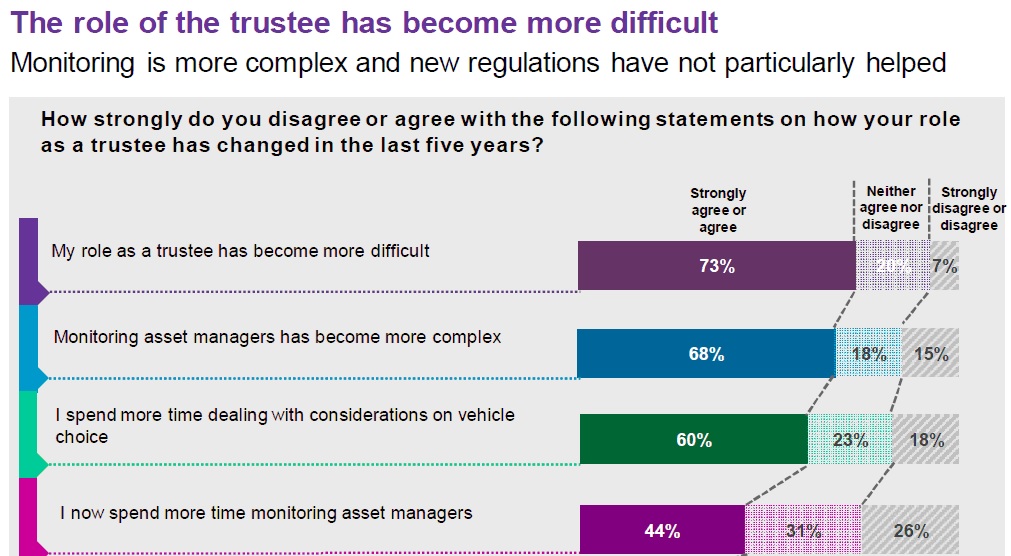From the blog: Asset owners are struggling to balance the growing complexity with the governance needed to oversee their assets effectively.
This has been highlighted in a recent survey, which shows that a majority of trustees agree monitoring assets has become more difficult and are finding their roles more challenging than before.
The research raises questions about how the institutional asset management model is currently organised. The current model, with a siloed approach towards governance structures, means monitoring asset managers has become more complex.

Source: 2017 Willis Towers Watson AMX Pulse Survey (Note: Data may not total 100 per cent due to rounding.)
For example, if a pension fund wants to find out how much exposure it has to a specific counter-party or asset type, the trustees generally have to manually contact all of the asset managers in their portfolio to ask for the data.
Manager A might provide the data from last month, while Manager B might provide the data from last week. This is of course assuming that they provide the data at the same time.
Furthermore, there is no industry standardisation on how these data are reported, making it even harder for trustees to make sense of it.
Trustees are also have to deal with a growing compliance burden. For the asset management industry to continue serving the end-user – the saver – it needs to provide more support and make trustees’ lives easier. Rather than letting complexity cloud the role of the trustee and making the system ineffective, it is necessary to make wholesale changes to the way the industry operates.
The future is a centralised model, where standardisation is the norm and can reduce the number of hurdles trustees face. Even asset managers would benefit from centralisation – scale is a compelling combination for everyone.
Ultimately, asset owners want to easily access their most skilled managers in an efficient manner. In a centralised model, asset managers will be able to focus on their core skill: investing and providing better outcomes for their investors.
Oliver Jaegemann is global head of The Asset Management Exchange in consultancy firm Willis Towers Watson






















